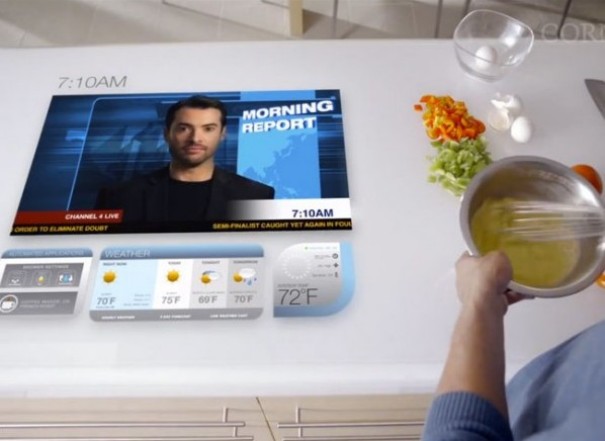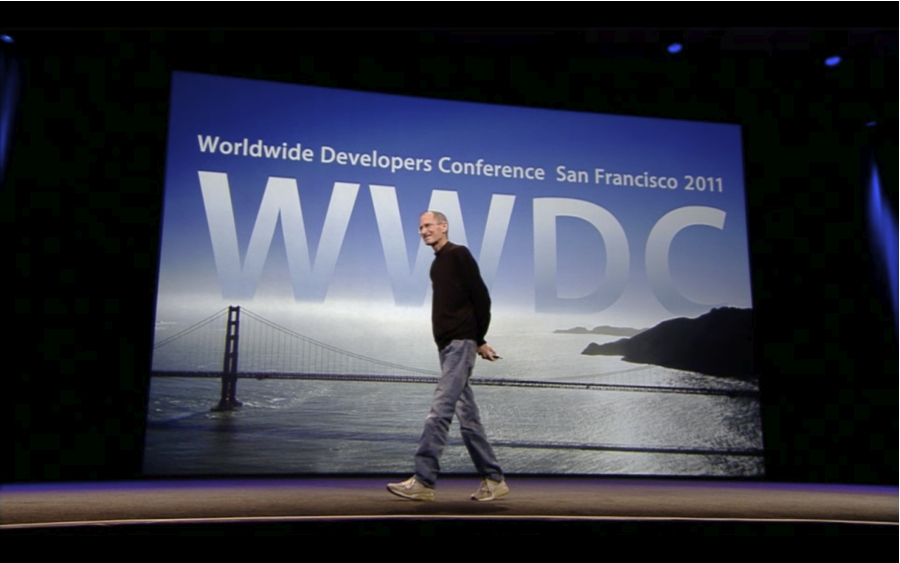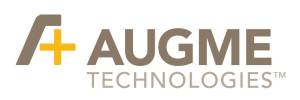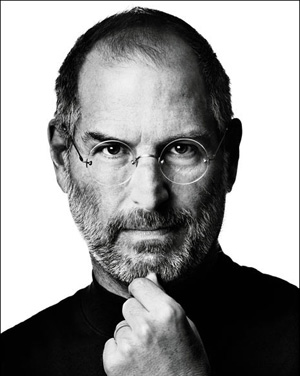In the near distant future, all of the surfaces in your house are made of high-tech glass. Instead of following a recipe on your tablet, your glass countertops now become the display. Does this make your spine tingle? Does it feel uber-tech, light years away? Like something only Steve Jobs or Captain Kirk would have access to? Nope, it’s coming to your doorstep.
Let’s paint a picture of an average Joe (or Joanne)’s day… It’s dinnertime. While trying to make the meal, the recipe on your tablet is too small to see and the stand you have propped it up on keeps falling over. Your hands are caked in food and the phone rings. Your son sits across the counter from you, nagging you about needing help with homework. Everyone and everything around you demands your attention. Imagine an innovation that could help you manage all of those tasks.
When the phone rings, your counter lights up and with one touch of your food-caked knuckle you’re talking to your great aunt Gladys (or the CEO of a major tech firm). Meanwhile, your kid is interacting through the countertop display with his tutor.
This near distant future could be possible with Corning’s technology. Corning’s is now researching ways to improve the glass, and apply it to all types of environments. Each glass display is powered by tablets encased in lightweight, durable glass, which –in this future time- are almost as commonplace as smartphones are today. Each tablet is tailored to its owner, organizing, managing and displaying everything in his or her life.
If we take this vision even further, now imagine the same technology that helped make dinnertime prep simpler, and apply it in hospitals, classrooms, cars and offices. The possibilities are limitless. If we step into a future hospital we will see wall-to-wall, touch-sensitive displays, capturing critical information for the current procedure taking place. The hospital rooms are covered with non-porous, easy to clean glass, making it an ideal product for sterile environments. Patient charts can be easily accessed from sleek, well-organized tablets.
Cars will also be equipped with glass displays. Now, music and essential driving information can be transported from a person’s individual tablet or smart phone, to the dashboard display. In addition to the dashboard, windows and a car’s sunroof will be made of automotive electrochromic glass, offering many possibilities.
Not only will classrooms have wall-to-wall displays, they will also be equipped with desk displays, and activity tables, making learning tangible and interactive. Imagine an office equipped with this same glass. Office meetings can now be interactive and plans can be changed right in front of you on large-scale displays.
Our future with glass is going to change the way we think, create, and organize our lives, and Corning’s is stepping up to the plate to make it happen. What do you think is possible with this futuristic technology? To see the glass in action, watch these three videos made by Corning. In A Day Made Of Glass 2: Unpacked, the narrator describes the technology used and explains what is possible today.
A Day made of Glass 2: Unpacked
Until next time,
Kelli Richards, CEO of The All Access Group, LLC













